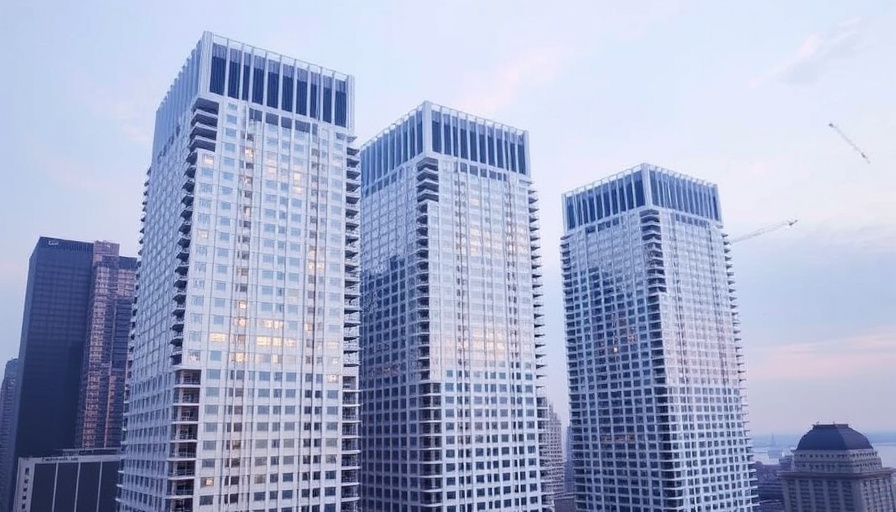
Redefining Urban Living: The Rise of Journal Squared
In the heart of New Jersey, a striking architectural marvel has emerged: the Journal Squared development. Comprising three interconnected skyscrapers, these structures are not just a testament to modern design; they symbolize the evolution of urban living and remote working. With sleek, white façades, these skyscrapers stand tall, showcasing intricate designs that foster community while prioritizing workspace efficiency.
Design with Purpose: A New Standard for Remote Workspaces
As digital nomads continue to embrace a lifestyle predicated on flexibility and mobility, the need for comfortable and efficient workspaces has never been greater. The layout of Journal Squared is intentionally crafted to accommodate this demographic. Each building integrates communal areas that encourage productivity, creativity, and collaboration, making it an ideal environment for remote workers who often seek creative solutions and connections.
Creating Comfortable Workspaces: Ergonomics Explained
At the core of an effective workspace is ergonomics, which focuses on designing furniture and layouts to optimize productivity while minimizing discomfort. The skyscrapers feature open floor plans with adjustable workstations, designed to suit varying preferences and tasks. By integrating natural light through expansive windows and including ample greenery, residents can enjoy a balanced work environment that enhances focus and reduces fatigue.
Building a Sense of Community: The Importance of Social Connections
Beyond physical design, Journal Squared emphasizes the significance of social interactions in the workspace. For digital nomads, building connections is crucial. Shared amenities, such as cafes and lounges, offer opportunities for networking and forming relationships, making it easier to collaborate or simply enjoy a conversation over coffee. A strong community can elevate productivity and provide emotional support, which is notably beneficial for freelancers.
The Future of Remote Work: Architectural Trends to Watch
This development heralds a shift in architectural trends that prioritize adaptability. As more people opt for remote work, the demand for residential spaces that can seamlessly transform into workspaces is on the rise. Developers are likely to incorporate designs that cater to both living and working needs, integrating technologies that support virtual meetings, increased connectivity, and better overall workflow.
Local vs. Global Perspectives on Workspaces
While Journal Squared represents a localized effort to foster a community for remote workers, it also points to a global trend. Cities around the world are rethinking how workspaces are integrated into living environments. Urban planners and architects are learning from successful projects to create their own versions of connected living and working spaces, ultimately reshaping how we view the concept of 'home.'
Practical Tips for Setting Up Your Remote Workspace
If you find yourself working from home or in a flexible remote role, consider these strategies to maximize comfort and productivity. Firstly, ensure your chair and desk are ergonomically designed to reduce strain. Secondly, incorporate elements that promote a calming atmosphere, such as plants or art. Finally, designate a specific area for work to mentally separate your personal life from your professional tasks.
Conclusion: Finding Inspiration in Urban Design
As urban landscapes evolve to embrace innovative designs like the Journal Squared, digital nomads can look to these spaces as sources of inspiration. By prioritizing comfort, social connections, and a balanced work-life approach, cities are crafting environments that support flexible lifestyles. Join the movement and explore how you can create a workspace that is not only functional but also deeply connected to your community.
 Add Row
Add Row  Add
Add 




Write A Comment